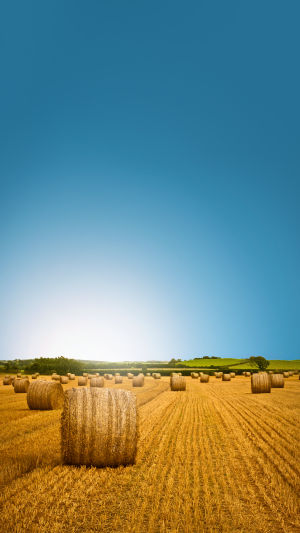Spain has a diverse range of natural and idyllic landscapes. After entering the wheat harvest season, bundles of wheat straw after harvest can be seen everywhere, forming a beautiful picture scroll.
Spain is known as the vegetable basket and grain store of Europe. Although the country is arid, it has fertile land. The Andalusia region, located at the southernmost tip of Spain, is fertile and sunny and is an important crop-producing area in the country.
In the fields of Spain, you will often see bundles of "hay bales" like the above. Wondering what they are? "Hay bales" are bales of straw, which is the rest of the crops after the grain is harvested.
Corn and wheat are planted in the fields, and some empty fields seem to have been harvested, leaving only a lot of "hay rolls" left in the fields.
Turns out this hay roll can be used as an organic material for land cover. It is not ordinary hay, it has to be the dry straw of cereals and beans to make this "hay roll".
Straw can be crushed and used directly to feed livestock, or it can be crushed and made into silage.
The anaerobic fermentation of lactic acid bacteria is naturally used to produce lactic acid, which will stop most microorganisms from multiplying, thereby maintaining the nutrition of green straw. These hay rolls have a slightly fruity aroma and are good for feeding cattle during the winter when forage is scarce.
If the forage is straw purchased from your own or nearby contracted land, you can make hay bales as long as it is not wet. If the straw is not completely dry, it is not recommended to pack it.
Because if you don't finish eating on time after packing, it will become mouldy and spoiled and cannot be used, resulting in waste of forage. Cattle will be poisoned or die if they eat mouldy forage.
"Hay bales" are the pride of the Spaniards - the world's first straw power plant was built in Spain, and so far the leading straw power generation technology is also in Spain. Hay bales are useful!
Straw belongs to biomass energy and generates very little carbon dioxide for power generation. Together with wind energy and solar energy, it belongs to renewable new energy.
In addition, the plant ash after straw burning can be returned to farmers as fertilizer free of charge. Using a straw to generate electricity, power plants reduce the cost of raw materials, people enjoy cheap electricity prices, the environment is protected, and new energy sources can be developed.
At the same time, it also increases the income of farmers and connects a "golden circle".





